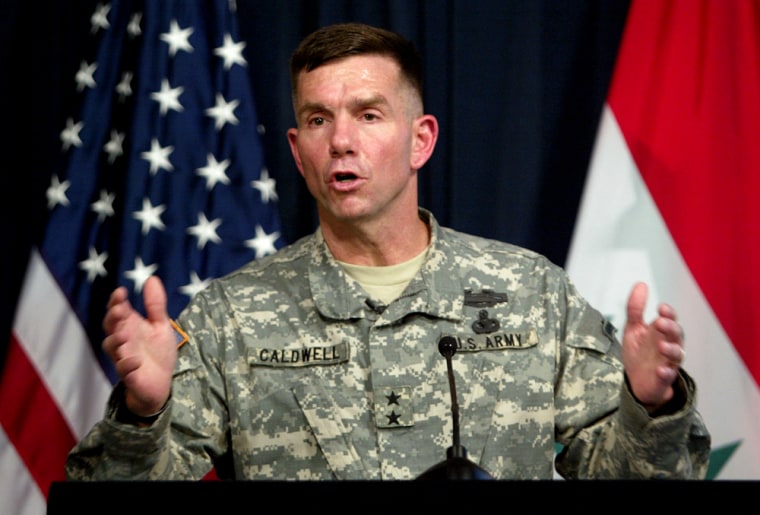U.S. commanders in Iraq won’t know until at least autumn when they can begin to bring troop levels back down, the chief spokesman told the Associated Press on Wednesday.
The overall U.S. commander, Gen. David Petraeus, will want to sustain the momentum that has been gained in the Baghdad security offensive by keeping five added Army combat brigades in place, Maj. Gen. William C. Caldwell said.
“I think it’ll be fall before General Petraeus can make a decision on whether he wants to bring down his force level,” Caldwell said in an interview in Dubai.
Only two of the five Army brigades are fully active in Baghdad, but a third, from the 82nd Airborne Division, is moving in now. Caldwell said all five won’t be in place until June. A pair of additional Marine battalions are reinforcing operations in western Anbar province.
In January, President Bush announced that 21,500 more soldiers and Marines would be sent to Iraq, most of them to Baghdad. Extra military police and support units have swollen that number to 28,000.
Surge into Baghdad
For now, Petraeus wants to put all five Army brigades — about 10,000 soldiers — into Baghdad. But he could change his mind and send them to other hot spots, including the Sunni Muslim insurgent strongholds of Anbar and Diyala provinces, Caldwell said.
“When we see success we want to keep pushing forward,” the spokesman said.
Those sentiments were echoed by the No. 2 Iraq commander, Lt. Gen. Ray Odierno, who told CNBC on Tuesday that it would take five to eight more months to gauge progress in the training of Iraqi troops. That is the factor that decides when the extra Americans can go home, he said.
Caldwell’s comments came as the Senate resumed debate Wednesday on a bill containing a spring 2008 timetable for bringing U.S. troops home. The president has said he will veto any legislation that contains a withdrawal deadline, saying that would encourage insurgents in Iraq.
Praise for Strykers
Petraeus has asked the Pentagon to send more Stryker fighting vehicles to Iraq, Caldwell said. The Army needs more than the 240 lightweight, wheeled personnel carriers that it currently operates, Caldwell said. The vehicles’ tough armor and quick mobility has proven useful in places like Diyala, where Petraeus just dispatched a Stryker unit.
“It’s a great fighting platform. It’s proven to be very reliable,” Caldwell said.
Caldwell said the Baghdad offensive was starting to calm sections of Iraq’s capital of 5.5 million people. Seizures of arms caches and death squad leaders, for instance, are on the rise, and Caldwell said there were signs that Iraqis’ deep pessimism had bottomed out.
With Petraeus’ arrival, the U.S. military has begun changing its counterinsurgency strategy, adopting tactics that put American troops closer to Iraqi civilians. Caldwell said the change had come late, but was still worth pursuing.
“This is the first time I’ve been optimistic about the situation in Baghdad and therefore Iraq,” he said. “I’m glad to see (the new strategy) at least starting now.”
